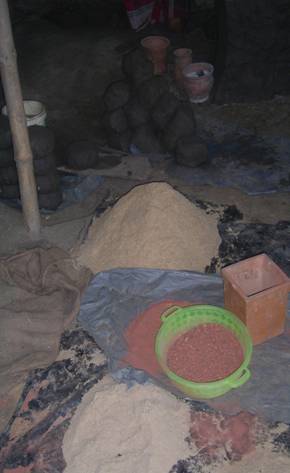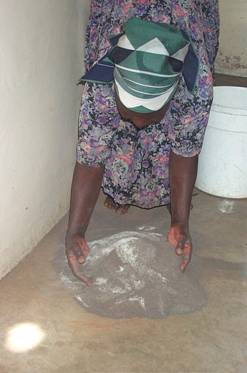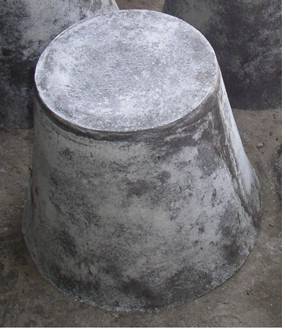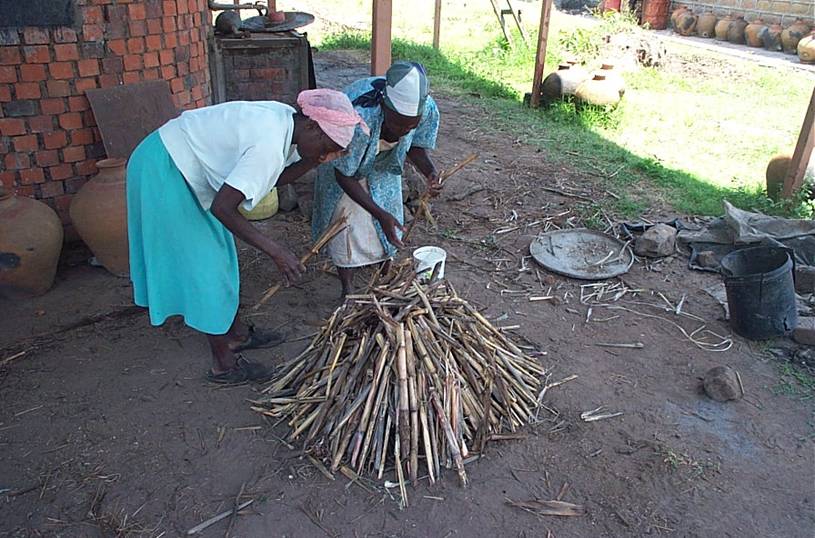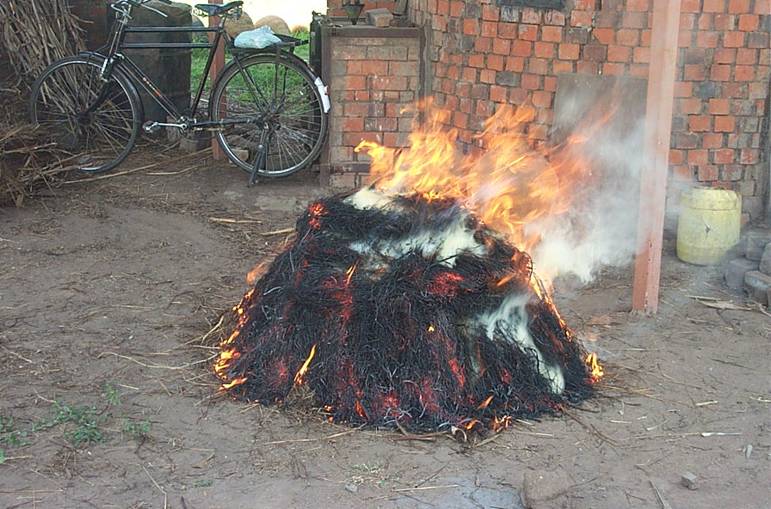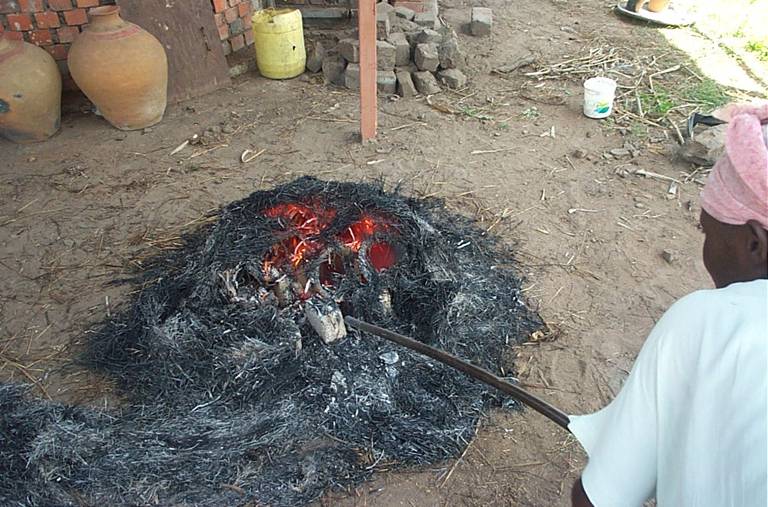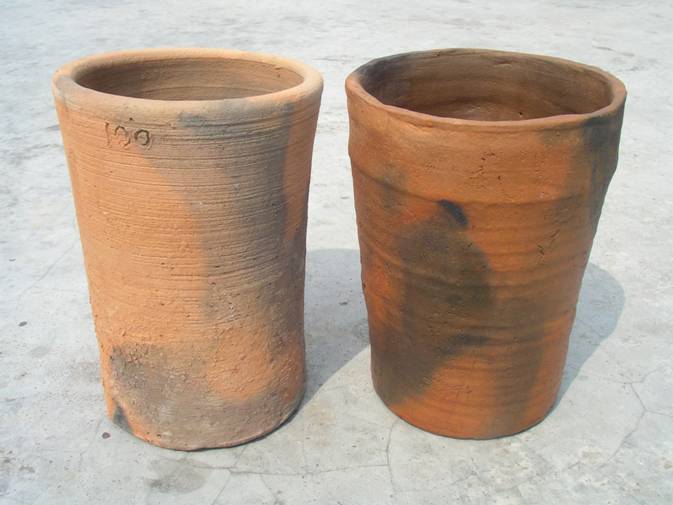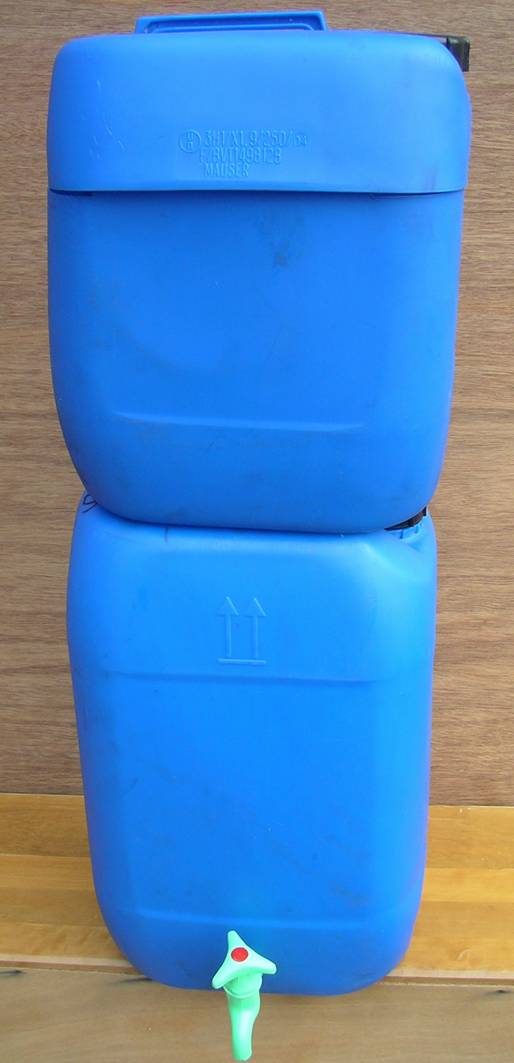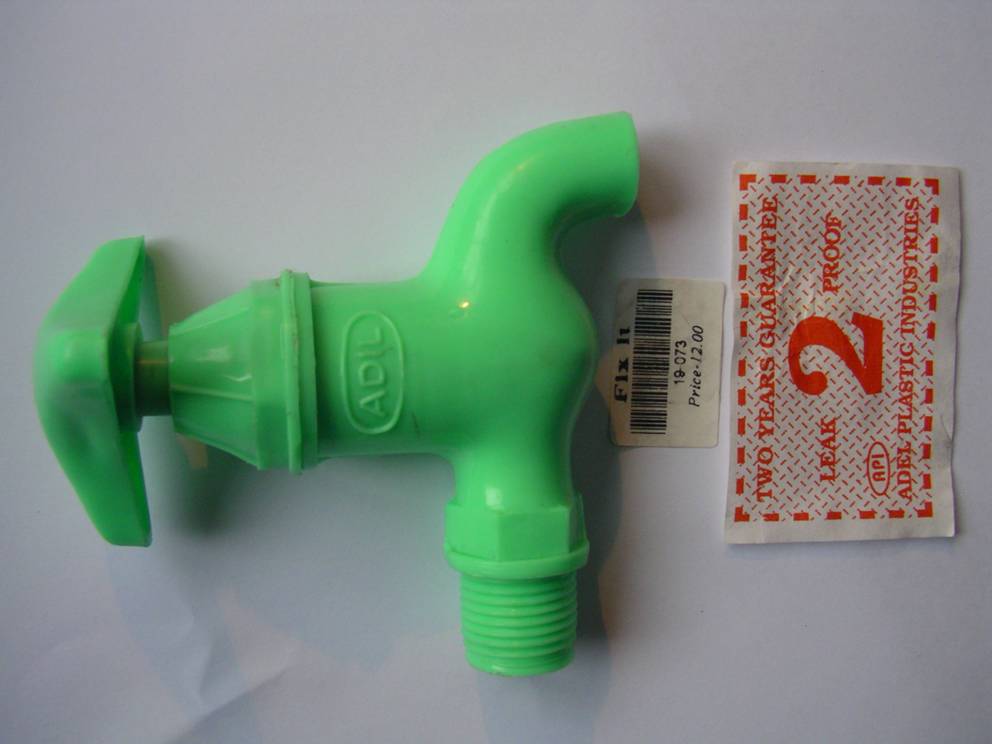Finished Ceramic Filters
Rejection of Escherichia coli (E. coli) typically >99.9% with filtration a filtration rate of 1 - 3 L.m-2.h-1 (LMH), enough for 10 Litres of good quality drinking water per day.
Filter Assembly
(a) The ceramic filter is housed in a two-tier filter assembly with integrated water storage container below (if cost and local preferences demand, all the plastic containers could be made locally as pottery items using conventional methods). Total cost < $5 (including the filter element (at $0.50).
(b). Improvised unit from recycled containers
a b
